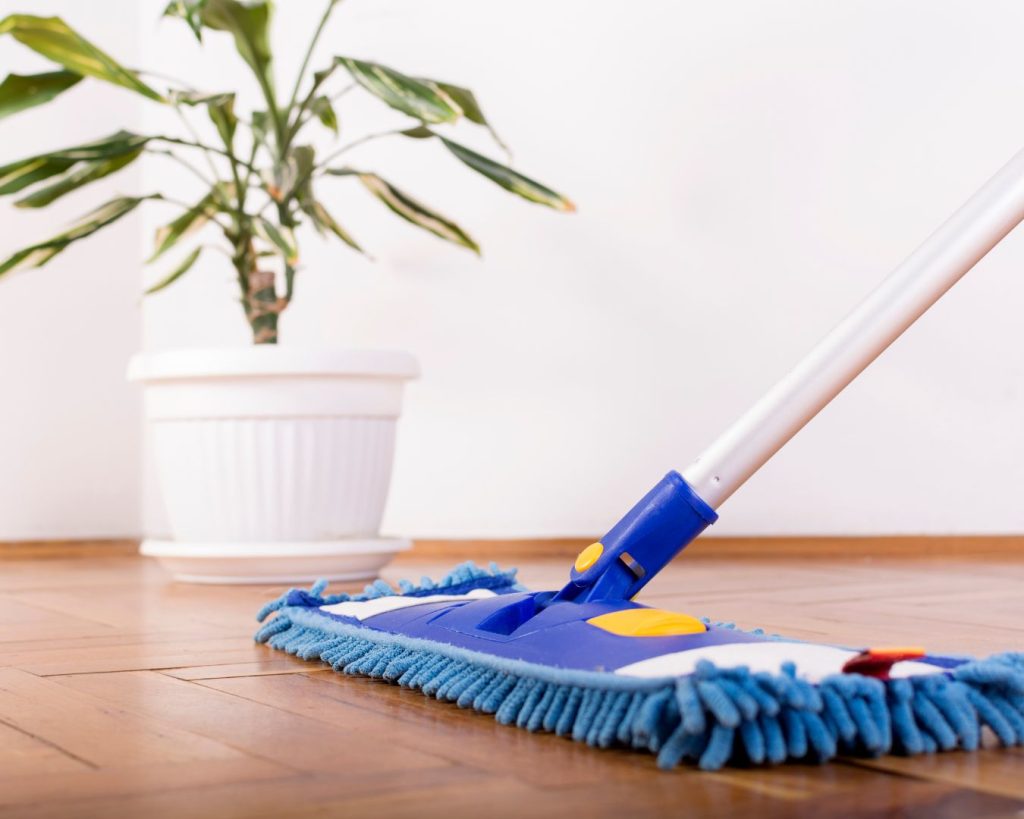The Ultimate Guide to Cleaning Kitchen Floors: Tips for a Sparkling Clean Space
A clean kitchen floor is essential not only for maintaining a pristine appearance but also for ensuring a hygienic cooking environment. With spills, stains, and daily foot traffic, kitchen floors can quickly become dirty. Whether you have tile, hardwood, laminate, or vinyl flooring, each type requires specific care to keep it looking its best. Here’s your ultimate guide to cleaning kitchen floors, ensuring they stay spotless and well-maintained.
Understand Your Flooring Type
A. Tile Floors:
- Ceramic or Porcelain: These are durable and resistant to stains. They can be cleaned with mild detergent and water.
- Natural Stone: Stone tiles like granite or marble require specialized cleaners to avoid damage.
B. Hardwood Floors:
- Solid Wood: These floors can be scratched or warped by excess moisture, so they need a dry or slightly damp cleaning approach.
- Engineered Wood: More resistant to moisture but still requires careful cleaning to maintain its finish.
C. Laminate Floors:
- Resilient and Stain-Resistant: Laminate floors are easy to clean but can be damaged by excessive water.
D. Vinyl Floors:
- Sheet Vinyl or Luxury Vinyl Tile (LVT): Vinyl is water-resistant and durable, making it easy to clean with standard floor cleaners.
Daily Cleaning Routine
A. Sweep or Vacuum:
- Tile and Vinyl: Sweep or vacuum daily to remove loose debris and prevent scratches.
- Hardwood and Laminate: Use a vacuum with a soft brush attachment or a broom to avoid scratching.
B. Spot Clean Spills:
- Immediate Action: Wipe up spills immediately with a clean cloth or paper towel to prevent stains or damage.
- Tile Floors: Use a mild detergent solution for sticky or greasy spills.

Weekly Deep Cleaning
A. Tile Floors:
- Mop with Cleaner: Use a mop and a solution of warm water and mild detergent. Avoid soaking the tiles.
- Grout Cleaning: Use a grout cleaner or a mixture of baking soda and water. Scrub with a brush and rinse well.
B. Hardwood Floors:
- Dust or Sweep: Remove dust and dirt with a broom or vacuum.
- Damp Mop: Use a mop with a wood floor cleaner or a solution of water and a few drops of dish soap. Wring out the mop thoroughly to avoid excess moisture.
C. Laminate Floors:
- Clean with Damp Mop: Mop with a solution of water and laminate floor cleaner. Avoid soaking the floor.
- Dry Thoroughly: Dry the floor with a clean, dry cloth or mop to prevent moisture damage.
D. Vinyl Floors:
- Mop with Vinyl Cleaner: Use a mop and a vinyl floor cleaner or a solution of water and a few drops of dish soap.
- Rinse if Necessary: For sticky residues, rinse with clean water and dry with a cloth.
Monthly Maintenance
A. Tile Floors:
- Sealing Grout: If your grout is unsealed, apply a grout sealer to prevent stains and keep it looking fresh.
B. Hardwood Floors:
- Conditioning: Apply a wood floor conditioner or polish to maintain the shine and protect the finish. Follow manufacturer instructions for application.
C. Laminate Floors:
- Cleaning with Vinegar: Occasionally, clean with a mixture of water and vinegar to remove residue and maintain shine.
D. Vinyl Floors:
- Deep Cleaning: Use a specialized vinyl floor cleaner or a mixture of baking soda and water to tackle stubborn stains.

Dealing with Stubborn Stains
A. Tile Floors:
- Baking Soda Paste: For tough stains, make a paste of baking soda and water, apply to the stain, and scrub gently.
B. Hardwood Floors:
- White Vinegar: For sticky residues, mix equal parts of white vinegar and water, apply to the area, and wipe clean.
C. Laminate Floors:
- Rubbing Alcohol: Use rubbing alcohol on a soft cloth to remove tough stains.
D. Vinyl Floors:
- Mild Abrasive Cleaner: Use a mild abrasive cleaner for persistent stains. Test in a small area first.
Preventive Tips
- Use Mats and Rugs: Place mats at entryways and rugs in high-traffic areas to catch dirt and moisture.
- Regular Maintenance: Keep up with daily and weekly cleaning routines to avoid build-up.
- Furniture Pads: Use felt pads on the bottom of furniture legs to prevent scratches on hardwood and laminate floors.
Maintaining clean kitchen floors is crucial for both aesthetics and hygiene. By understanding the specific needs of your flooring type and following a consistent cleaning routine, you can ensure that your kitchen floors remain spotless and in great condition. From daily sweeps to monthly maintenance, these tips will help you keep your kitchen looking fresh and welcoming.

